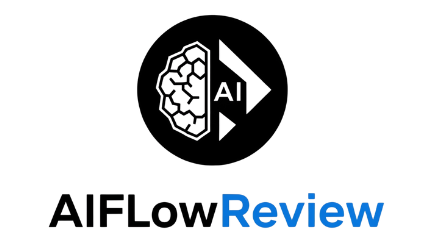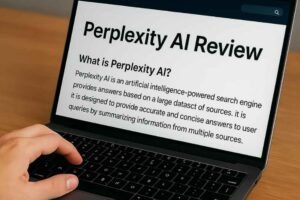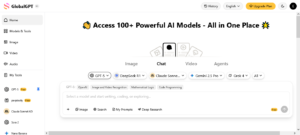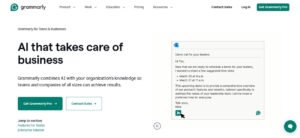Every e-commerce brand wants smoother automation, better personalization, and more reach without losing quality or burning out their team. Qwen AI is picking up steam as a serious AI solution, delivering smart improvements for online stores looking to keep ahead. Its fast evolution gives marketers, content teams, and growth leads fresh tools for adapting to new demands.
Shoppers expect tailored experiences, fast support, and relevant content in every language they buy in. Qwen AI meets that bar by driving advancements in five key areas: personalized buying journeys, quick and fresh content generation, visual search that actually works, real multilingual support, and sharper data insights. In 2025, these strengths help shops win more loyalty and run leaner. Here’s how Qwen AI stands out for brands that want to do more with less, while keeping a human touch where it matters.
Personalization and Smart Product Recommendations
Personalization is no longer a buzzword in e-commerce. Shoppers demand more than generic buying journeys. They expect every visit to feel like a curated shop window that knows their style, mood, and budget. Qwen AI delivers on this by using advanced behavioral analysis to give each customer smarter, more relevant product picks—almost like having a personal shopper sitting on the other end of the connection. Here’s how Qwen AI shapes meaningful, real-time recommendations at scale.

User Behavior Analysis: The Secret Sauce
Qwen AI tracks and learns from every click, scroll, and purchase, mapping out unique habits for each shopper. Instead of relying on cookie-cutter “most popular” lists, it builds a living model for each user by analyzing data points like:
- Product browsing history
- Time spent reading reviews
- Wish list additions and cart behavior
- Response to previous recommendations
By connecting the dots in this way, Qwen AI delivers what feels like a tailored shopping experience. For example, a returning customer searching for winter coats might get suggestions for matching accessories or limited-time discounts on their brand of choice. The old “customers also bought” carousel gets replaced by dynamic feeds that update in real time, powered by real signals instead of guesswork.
Dynamic Bundling and Real-Time Options
Dynamic product bundling is one spot where Qwen AI flexes real utility. Instead of letting shoppers hunt for matching items, it combines relevant products—think headphones paired with a trending smartphone, or workout shorts with fitness trackers—into smart bundles based on what’s usually bought together or what’s in stock.
- Less friction: Shoppers click less and buy more, speeding them through checkout.
- Higher average order value: Bundles surface options that customers might never spot solo.
- Fast adaptation: If a product goes out of stock or gets a new review blitz, Qwen AI recalculates bundles instantly.
Major retailers now rely on this kind of automation. According to Alibaba’s recent trend report, their apps now open with chatbots that quickly ask what you want, then fetch the best-fit products Generative AI in 2025: Transforming Industries with Use.
Sentiment Analysis and Contextual Prediction
Understanding click patterns is one level. Qwen AI goes deeper by sensing shopper mood from reviews, ratings, and real-time feedback. It’s more than just reading the number of stars left on a product—Qwen AI parses actual text to figure out which features customers praise or complain about, helping stores recommend options that avoid pain points for each user.
Practical examples include:
- Steering clear: If a shopper hates “bulky” phone cases, the AI skips those in recommendations.
- Pushing trends: If there’s a spike in positive reviews for eco-friendly materials, the system prioritizes these for green-minded users.
- Local context: During a sale, the AI might favor discounted items in a shopper’s preferred style, responding to deal-driven sentiment detected in their on-site activity.
Real-World Use and Smart Engines
Big names use Qwen AI for much more than just personalizing homepages. E-commerce giants like Alibaba integrate Qwen into every step, from intuitive search bars that guess intent, to fully automated chat assistants that nudge users toward carts without feeling pushy Alibaba Qwen AI: Future of Chinese Market Access.
For those writing content or building out multi-lingual campaigns, AI-driven recommendation engines smooth out the chaos with smart suggestions and localization—no more generic translations or irrelevant cross-sells.
If you’re ready to tap into this, check out 10 Qwen AI Prompts For E-commerce for hands-on prompt ideas, or see what the main Qwen AI platform does with personalization.
Where AI-Powered Product Recommendations Outperform
Let’s sum up with a look at how Qwen AI’s approach stacks up, especially for product suggestions:
| Feature | Old-School Recommendation Engine | Qwen AI-Driven Recommendation |
|---|---|---|
| Updates in Real-Time | ❌ No | ✅ Yes |
| Learns Preferences | 🚫 Basic | ✅ Granular & Continuous |
| Reads Sentiment | 🟡 Only stars | ✅ Deep review text |
| Bundles Dynamic Combos | ❌ Static | ✅ Personalized on the fly |
| Global, Multilingual | 🚫 English only often | ✅ Full language support |
If you’re curious how these kinds of AI-powered product recommendations fuel higher conversion and loyalty, it’s worth scanning the latest take in the State of AI in E-commerce 2025 Quid Trend Report.
Qwen AI doesn’t promise magic, but when you combine behavioral science, instant feedback loops, and live inventory, you get a sales assistant that keeps learning—and helps shoppers get what they want, faster. For content creators and marketers, that means fresher ideas, more relevant campaigns, and less wasted effort on tired recommendations.
Automated Content Creation and Localization Across Markets
If you’ve spent hours rewriting the same product description for different regions, Qwen AI feels like finally getting a toolkit built for actual content teams, not just IT. This model lets brands push out thousands of SEO-optimized descriptions, snappy blog posts, or fresh ad copy—then localize them for 119 languages, all at scale. It’s not “one click publish” ready for everything (it still needs editing and smart prompts), but it clears the hardest roadblocks in e-commerce: volume, language, and local nuance.
Here’s where Qwen AI bends the productivity curve for busy e-commerce shops.
High-Volume, SEO-Optimized Content Generation
Cranking out effective product listings usually means picking between quantity and quality. Qwen AI brings those closer together. It uses user-tuned prompts to spin up unique, keyword-rich product descriptions that balance search optimization with brand tone.
- Bulk product descriptions: Upload a product feed, define your required terms and features, and let Qwen AI draft hundreds of variations. Finish with a batch edit for voice or compliance.
- Quick ad copy and campaign assets: Need fresh meta descriptions, headlines, or social posts for a big sale? Drop your promo details and target keywords, and run drafts for each channel in minutes.
- Content clustering: Assign templates by category or season, then automate seasonal refreshes or new arrivals. Your summer shoe line can get fresh blurbs—without repeating last year’s language.
For actual outputs, the results are strong for short-form and mid-length writing. Long-form blog posts or complex category guides still need a real writer’s eye, but Qwen AI gives you workable raw material as a foundation.
Multilingual Content and Seamless Localization
Qwen AI’s real edge is how it treats language as a starting point, not a barrier. Its multilingual support now covers 119 languages and dialects, making it fit for global e-commerce at scale. You don’t just get translations—you get context-aware adaptations that avoid awkward Google Translate moments.
- Translates while localizing: Qwen AI takes prompts in English and outputs fluent, locally-toned content in Turkish, Spanish, Thai, Arabic, or dozens more. You can customize for dialect and region.
- Culture-aware examples: The AI swaps out US-centric measurements or holiday references for what’s normal in Germany, Japan, or Brazil. If you’ve ever cringed at a bad translation, this is welcome relief.
- Direct workflow integration: Plug Qwen AI into existing Shopify or WooCommerce flows using open-source connectors or APIs, and push ready-to-proof content straight to your site’s localization teams.
See more on Qwen’s extensive language ability and how it fits brand expansion in the Qwen3: Think Deeper, Act Faster overview and Key Concepts – Qwen – Read the Docs.
Content Strategy Advantages Over Other Models
What sets Qwen AI apart for real marketers? It’s flexible, open-source, and more affordable to run or customize than most proprietary AI tools. Here’s the practical benefit:
- Open weights, no high licensing fee: Use Qwen AI models on your own infrastructure (cloud or local) with Apache 2.0 licensing. No per-word charges.
- Template-ready for large teams: Set up workflows with your brand’s templates, controlled prompts, and glossary. This keeps brand voice consistent, even at speed.
- Modular growth for new markets: As you add languages or regions, just extend your prompt library—no need to start from scratch.
If you want a multi-market advantage without being locked into a provider, Qwen AI is a rare open-source option that doesn’t sacrifice scale or accuracy. In my tests, it holds up for anything repeatable, templated, or structured. Judging by benchmarks, Qwen3 competes well with pricier rivals for multilingual depth (see Qwen Models: The Complete Guide to Alibaba’s Open Source LLMs).
Open-Source Flexibility and Cost Control
For businesses with in-house tech teams or heavy automation goals, Qwen AI checks boxes that typical SaaS tools never will:
- Self-hosting options: Deploy it locally, on cloud VMs, or through managed providers using open weights.
- Customizable for special workflows: Use your own dataset to fine-tune tone, language, or compliance.
- Cost control at scale: Skip the platform markup. Run thousands of content generations per day using bulk hardware or affordable cloud time.
If you need a side-by-side of what Qwen AI delivers and where its biggest strengths are, check out this Qwen: What It Is and How This Generative AI Model Works feature, or for clear bullet points and scenarios, review the features and real-world use cases of Qwen AI.
The bottom line? Qwen AI makes it possible to keep up in ecommerce content arms races, especially as markets go global. You still need humans for review, context, and final polish, but the AI gets you 80 percent of the way—leaving your team focused on the voice, not the busywork.
Smarter Visual Commerce and Image Automation
Qwen AI is taking visual commerce to a sharper, faster place in 2025. The push for smarter, more engaging product images is nothing new, but this year we’re seeing a real leap in what’s possible for marketers and site managers. Qwen’s multimodal capabilities now cover everything from AI-powered visual search to real-time product image edits and virtual try-on, all with instructions as simple as texting a coworker. If you’re tired of clunky photo editors or wrestling with 20 browser tabs for comps and crops, the latest version of Qwen AI is a genuine time-saver.
Visual Search and Virtual Try-On: Raising the Engagement Bar
AI-powered visual search isn’t a nice-to-have anymore, especially for fashion and lifestyle brands. Qwen AI’s visual engines let shoppers upload a photo or screenshot and instantly get product matches and styles available in your catalog. It’s not just about identifying objects or brands. The system understands context and details—like spotting the difference between similar shoe silhouettes or pulling out fabrics and finishings from a single shot.
- Shoppers snap, upload, and get tailored options in seconds.
- Results update live based on what’s in stock or trending.
- Styles, sizes, and suggested alternatives come up automatically.
For brands with AR or “try-on” features, Qwen’s visual models can match clothing or accessories to a customer’s body shape and coloring, streamlining the path from inspiration to cart. This isn’t pie-in-the-sky tech—major platforms are using models like Qwen for these features. If you want a picture of how AI is transforming e-commerce, this is front and center.
Precision Editing with Qwen-Image-Edit
The Qwen-Image-Edit upgrade has set a new bar for instruction-driven image editing. It lets marketers, product managers, and even non-designers fine-tune campaign shots and product listings with plain language commands.
Some real-world wins with this tech:
- Add, remove, or recolor an item in a product photo without professional Photoshop skills.
- Fix backgrounds, swap promotional text, or tweak clothing colorways for localized listings.
- Chain edits together, making quick corrections and refinements for high-stakes image assets.
What stands out is the model’s ability to understand nuance and context. Need a background swapped for a holiday campaign? Or want to correct text on packaging without redoing the whole image? The model keeps fonts, shadows, and lighting natural—no more awkward crops or mismatched typography.
For deep technical and marketing background, check out the model’s foundations at Qwen AI and the hands-on performance analysis in Is Qwen-Image-Edit the 2025 Breakthrough Image-Editing AI.
Automated Image Pipelines: From Uploads to Campaign-Ready
E-commerce assets used to bog teams down with rounds of manual edits and checklist reviews. With Qwen AI, batch processing and automated pipelines are now within reach for even mid-size teams. Here’s a practical workflow:
- Upload a new product photo.
- Run automated background cleanup, cropping, and retouch commands.
- Instantly localize campaign assets by swapping packaging or taglines in different languages.
- Automate split testing with multiple image variants and direct user engagement feedback into the next round of edits.
No special coding or deep training is needed—just clear instructions. The speed and accuracy of the model (with most edits clocking in under 3 seconds and over 99% instruction accuracy) are a huge win for launch velocity.
If you want a bite-sized breakdown of what makes Qwen-Image-Edit stand apart, Qwen-Image Edit gives Photoshop a run for its money does a straight comparison from a content creator’s point of view.
Competitive Advantage: Engagement, Conversion, Consistency
Even small improvements to product visuals can move the conversion needle, but Qwen AI puts this on fast-forward by:
- Enabling truly dynamic and personalized listings for every region and campaign.
- Letting teams respond to feedback or new trends with “just-in-time” image updates.
- Making split-testing visual elements as easy as point and click.
For anyone who’s spent hours wrangling image files or sweating last-minute launch deadlines, the competitive edge is real. These tools not only drive higher engagement, they make your catalog adaptable—so what’s performing well gets seen first.
Here’s a snapshot of why Qwen-Image-Edit matters for serious e-commerce teams:
| Feature | Qwen-Image-Edit | Legacy Image Tools |
|---|---|---|
| Instruction-driven | ✅ Yes (plain language prompts) | 🚫 No (manual steps) |
| Multimodal capability | ✅ Visual, text, context aware | 🚫 Visual only |
| Batch processing | ✅ Built-in | 🚫 Limited |
| Text editing in images | ✅ Natural look, multiple fonts | 🟡 Often garbled or basic |
| Speed | < 3 seconds per edit | Minutes+ per edit |
This step up isn’t just about pretty product shots. It’s about making image workflows click for every campaign, every price point, and every local market you want to reach. That’s where “smarter” visual commerce actually earns its keep.
For more on how Qwen’s visual capabilities power creative growth and campaign performance, the team demo and use case gallery at Qwen VLo is worth your time.
Business Intelligence: Data-Driven Decisions and Efficiency Gains

Qwen AI’s real power comes into play when it moves past automated content and image creation and digs deep into your e-commerce data. For the first time, even small- to mid-size brands can make data-driven decisions at the level usually reserved for enterprise giants. With Qwen AI, business intelligence is not just about reacting to last month’s numbers. It’s about seeing patterns as they happen and steering your team ahead of the curve. Here’s what that looks like in practice across pricing, supply chains, inventory, and support.
Advanced Analytics for Pricing, Inventory, and Market Trends
Too often, pricing and inventory are set with broad averages and old purchase cycles. Qwen AI flips that on its head. This AI doesn’t just create dashboards; it pulls live sales, search, and even competitor data to help store managers spot when it’s time to raise, drop, or hold prices. Product demand surging in one market but tanking in another? Qwen flags the pattern and suggests responses—sometimes hours before it becomes obvious in your sales numbers.
Practical wins for e-commerce brands using Qwen AI:
- Price optimization: Spot pricing gaps and suggest real-time adjustments. Qwen AI helps brands increase margins without losing customers.
- Dynamic inventory balancing: By tracking not just sales, but wish lists and “almost bought” carts, the AI pins stock levels to real intent, not just back-office lag.
- Supply chain smoothing: See shipping delays or upstream stockouts as soon as the first signs pop up. Qwen can alert your ops team before the warehouse knows it’s a problem.
- Market trend predictions: Qwen’s trend modeling taps current purchase signals, review sentiment, and even social buzz to guess what will move next.
A look at the latest release of Qwen 2.5 shows just how advanced Alibaba’s stack is—combining multilingual data streams, market benchmarks, and real-time simulations.
Operational Efficiency in Support, Order Management, and Forecasting
Most AI pitches promise magic for support teams, but Qwen AI does more than auto-replies or ticket sorting. It runs real analytics on what customers ask, what goes wrong in fulfillment, and what’s trending in complaints. Here’s how that translates to actual time and cost savings:
- Automated FAQ and response routing: Dynamic answer suggestions for support reps (and auto-responses for simple questions) cut first-response times.
- Order management: Qwen streamlines repetitive status checks, inventory sync, and delivery projections, letting human teams solve the edge cases instead of chasing updates.
- Demand forecasting: Real-time monitoring and training helps Qwen spot when those spikes and drops in order volumes signal bigger trends, not just random noise.
Teams using Qwen AI report fewer missed restocks, faster order resolutions, and a sharp drop in customer complaint escalations.
How Real Platforms Harness Qwen AI for Insight and Efficiency
Alibaba’s own marketplace is the testing ground for Qwen’s latest AI. Merchants on their site now get:
- Supplier risk signals (supply chain disruptions or payment issues flagged automatically)
- Price war alerts when a competing seller undercuts by more than 2 percent
- Customer churn prediction before segment retention drops
- Live content optimization as campaigns run, tweaking headlines and offers based on click and conversion data
Curious how these changes echo across the industry? See the patterns highlighted in 8 AI Trends in 2025: What Ecommerce Businesses Need to Watch. Many of the drivers for 2025 are powered by this kind of underlying AI analytics, not just surface-level features.
Business Intelligence Table: Common Use Cases
For those who like skimmable takeaways, here’s a side-by-side of how Qwen AI stacks up when plugged into real stores:
| Task | Old-School Process | Qwen AI Approach | Efficiency Benefit |
|---|---|---|---|
| Price Changes | Manual, by cycle | Automated, near real-time | Faster, data-backed pricing |
| Inventory Planning | Guess or historic sales | Predictive, demand-driven | Less overstock and stockouts |
| Customer Support | Scripted responses | AI-drafted replies, routing | Higher satisfaction, lower cost |
| Demand Forecasting | Basic trend analysis | Multisource predictive models | More accurate plans |
| Market Trend Detection | Delayed reaction | Near-instant, multi-signal | Competitive edge |
What to Expect When You Deploy Qwen AI
Here’s my honest take, based on hands-on use and feedback from practitioners:
- Gains are big if you actually track your data and adapt in response. If you just automate without acting on insights, you’ll leave money on the table.
- Data quality matters. Feed bad inventory or old pricing data in, and Qwen’s outputs lose sharpness. Clean data equals real wins.
- For small stores, the built-in models are a huge shortcut to “big brand” analytics—no data scientist required.
- It works best as a decision aid, not a replace-human system. Keep your managers and ops in the loop for exceptions or brand moves.
Want insight into how AI like Qwen is reshaping buyer habits, operations, and margins? Shopify’s in-depth look at AI trends to watch in e-commerce for 2025 lays out the most likely benefits and hurdles.
For those looking to compare several AI solutions side-by-side before jumping in, I recommend reading the AI software comparisons before purchase guide on AI Flow Review.
Qwen AI’s impact is practical: fewer mistakes, smarter orders, and pricing that actually matches where your business is headed to get ahead of the next challenge.
Conclusion
Qwen AI proves its value across every point in the e-commerce stack: sharp personalization, bulk content automation, fast visual search, and smarter decisions from live data. It’s rare to see an open-source AI model this capable become the spine of so many daily workflows, from campaign content to inventory tweaks, while cutting costs and technical friction. With major improvements in reasoning, language, and customizability, Qwen AI lets small teams deliver at global scale—without being locked into high fees or rigid platforms.
The open-source angle isn’t just for engineers. It means true flexibility for marketers, content creators, and business ops looking to experiment and move faster, with no vendor lock-in and a growing mix of plug-and-play tools. If you’re ready to integrate AI that keeps your competitive edge sharp, now’s the time to add Qwen AI pilots or tests to your 2025 roadmap. For those weighing next steps, start with a simple experiment on campaign text or product visuals, track results, and expand as you prove value.
E-commerce moves fast, and Qwen AI meets that speed with practical tools, not just promises. Thanks for reading—if you’ve tested Qwen AI in your store, share what’s working (or not) for you.

















